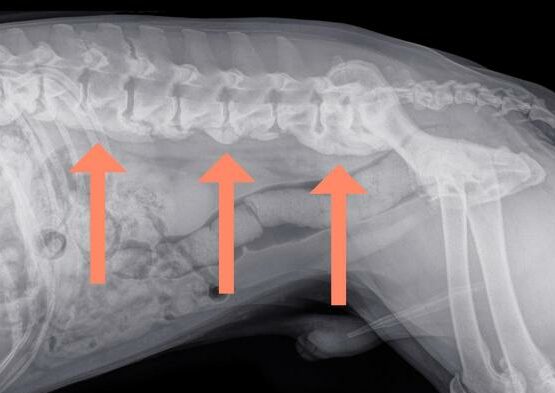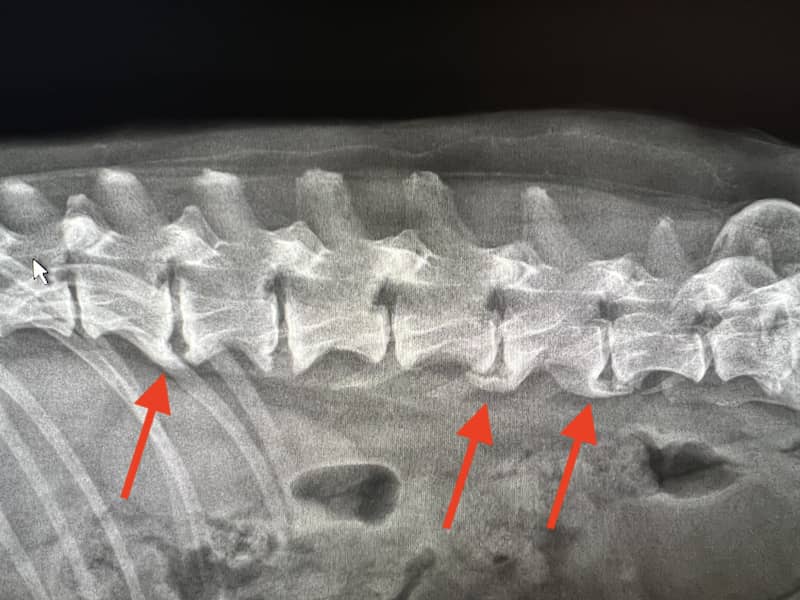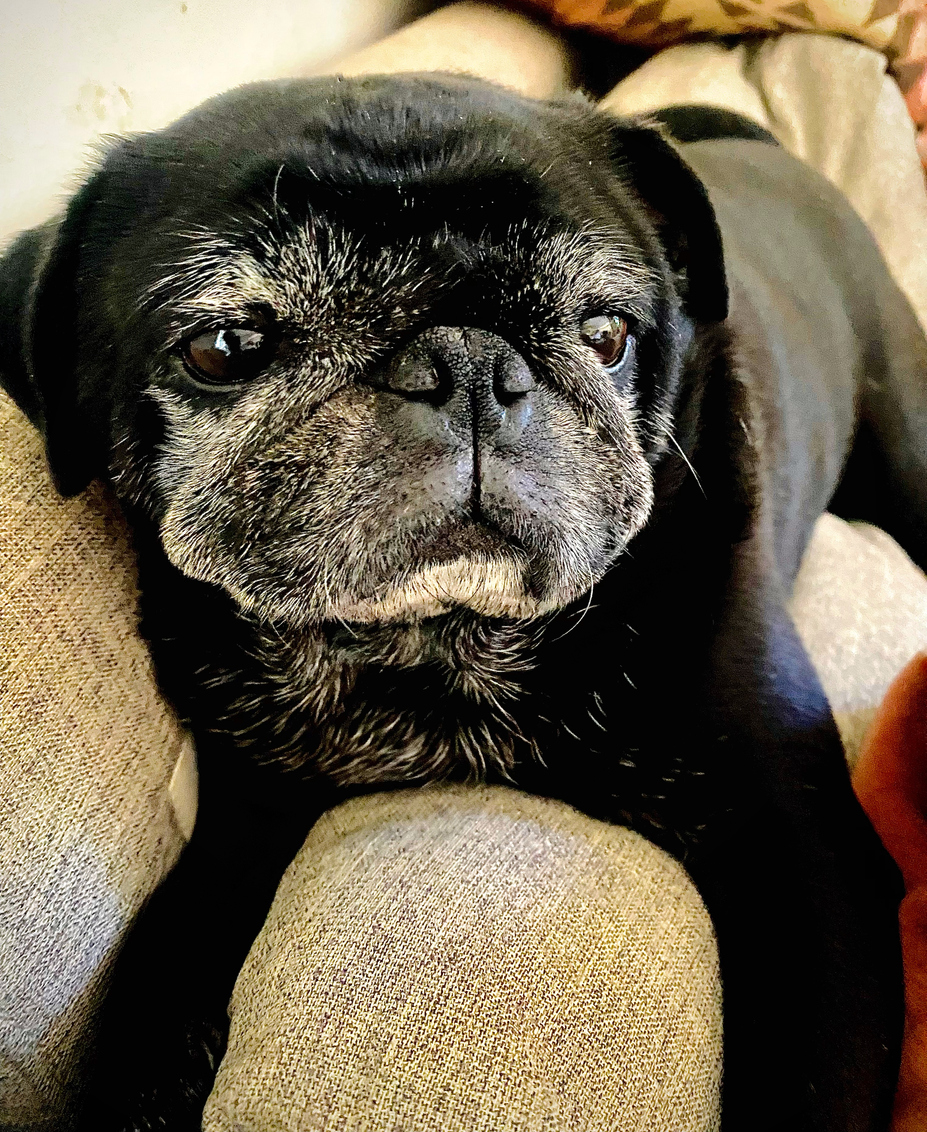Spondylosis Deformans in Dogs
What is spondylosis deformans?
Spondylosis deformans is a condition that affects the vertebral bones of the spine and is characterized by the presence of bony spurs or osteophytes along the edges of the bones of the spine. A bony spur may develop in a single spot on the spine; more commonly, there will be multiple bone spurs in several different locations along the spine.
The most common places that spondylosis deformans lesions develop are along the thoracic vertebrae (chest), especially at the junction between the rib cage and the abdomen, in the lumbar spine (lower back) and in the lumbosacral spine (around the hips and back legs).
In some cases the bony spurs may become large enough that they appear to form a complete bridge between adjacent vertebral bones.

What causes spondylosis deformans?
Spondylosis deformans is a chronic condition that is associated with aging. Research indicates that it often develops as a secondary problem related to degenerative disease of the intervertebral discs.
In the normal spine, the vertebral bones are joined by ligaments to form a flexible protective column around the spinal cord. There is an intervertebral disc between each vertebral bone, and these discs act as shock absorbers and cushions. The series of joints that make up the spine give the back flexibility of motion while protecting the delicate spinal cord from damage.
If the intervertebral discs do become damaged, the joints between them become less stable, resulting in abnormal motion. With spondylosis deformans, the intervertebral discs slowly degenerate as part of the aging process. The condition is not associated with inflammation. The bone spurs of spondylosis deformans develop to re-establish the stability of the weakened joint or joints.
The formation and growth of the osteophytes or bone spurs are triggered by instability and it appears that they grow only as large as is necessary to reinforce the diseased joint.
Is spondylosis deformans more common in certain breeds of dogs?
Although this condition was once thought to be more common in large breed dogs, any middle-aged to older dog can be affected. In most dogs, this degenerative condition will begin to develop by 10 years of age, and some researchers feel that every dog will develop this condition if it lives long enough.What are the symptoms of spondylosis deformans?
Most dogs with spondylosis deformans are free of any symptoms. Occasionally, the bone spurs restrict the movement of the spine and the dog may appear to be stiffer or the spine may not appear to be as flexible. If a bone spur grows near a nerve root as it comes out of the spinal canal, it may put pressure on the nerve, causing pain or lameness. If the condition is painful, the dog may whine or cry when touched along affected areas of the back.
Spondylosis Deformans in Dogs
Can other conditions cause bone spurs or osteophytes on the spine?
Any other condition or disease that causes instability to the spine can stimulate the development of osteophytes. Congenital vertebral bone deformities, trauma that causes a fracture or luxation, infection such as discospondylitis, and spinal surgery are several examples of other conditions that may cause osteophytes to form. In these cases, inflammation plays a role in the development of the bone spurs that form around the injured or unstable joint.How is spondylosis deformans diagnosed?
This condition is usually diagnosed from radiographs (X-rays) of the spine. In some cases, it may be an 'incidental finding' that is noticed when radiographs are taken for some other reason.
Since there is no difference in the radiographic appearance of a bone spur that results from spondylosis deformans and one that results from an inflammatory lesion, multiple radiographs may be needed to thoroughly assess the spine and identify radiographic patterns that indicate other causes of instability. This is especially important if the dog is showing any symptoms of nerve damage or appears to be in pain.
Other tests that may be recommended include a myelogram (special dye is injected into the spinal fluid surrounding the spinal cord, followed by radiographs) and/or magnetic resonance imaging (MRI). In some cases, your veterinarian may recommend referral to an orthopedic specialist for further diagnostics and/or treatment.
How is spondylosis deformans treated?
Treatment recommendations depend on the individual dog and whether or not it is showing any clinical signs.
Most dogs with spondylosis deformans appear to be pain-free and in these cases treatment is not necessary. If the pet appears to be painful, non-steroidal anti-inflammatory drugs (NSAIDs) or other analgesics may provide relief. Physical therapy, weight loss, and controlled exercise programs may be helpful in some cases.
In rare cases, the osteophytes may be causing spinal cord compression, and in these cases, surgery to remove them may be indicated.



